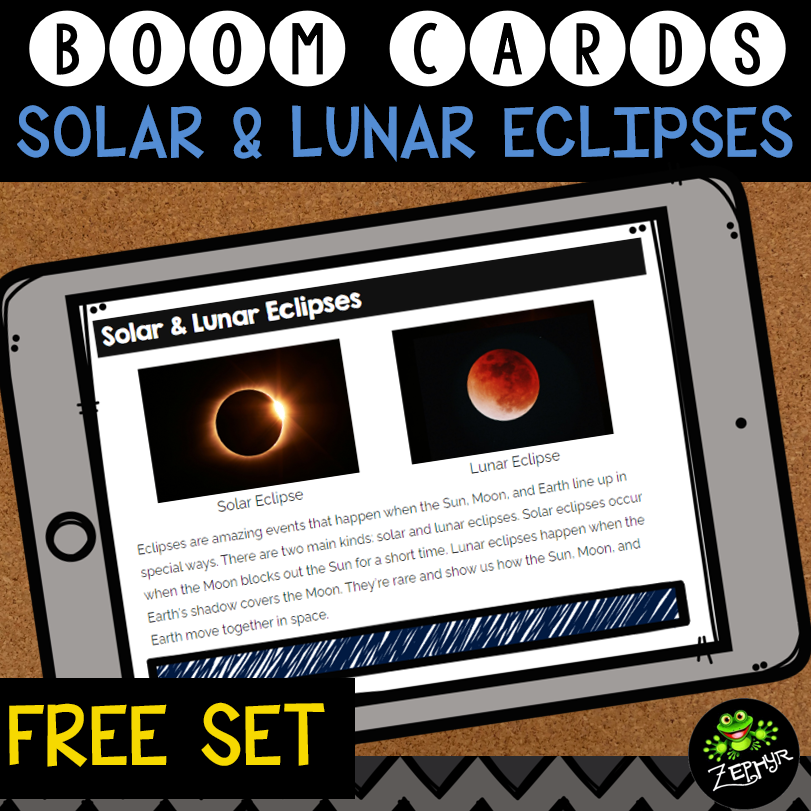Understanding Solar Eclipses: A solar eclipse occurs when the moon aligns perfectly between the Earth and the sun, casting a shadow on the Earth's surface. During a total solar eclipse, the sun appears completely covered by the moon, creating a brief period of darkness known as totality. Partial solar eclipses occur when only part of the sun is obscured by the moon. These celestial events offer a unique opportunity to observe the intricate dance of the sun, moon, and Earth in motion.
Exploring the Path of Totality: The April 8 solar eclipse will be visible in North America, with regions along the path of totality experiencing the most dramatic effects. While not everyone will have the opportunity to witness the total eclipse in person, all of the 48 lower states will be able to observe at least a partial eclipse.
- FREE Boom Cards: Check out the free set of Boom Cards in my store to introduce your students to the concept of solar & lunar eclipses. This set includes information, a map for the 2024 eclipse, and 2 sorting activities.
- Solar Eclipse Model: Create a simple model to demonstrate how solar eclipses occur. Use a flashlight to represent the sun, a ball for the Earth, and a smaller ball or coin for the moon. Have students experiment with different arrangements to simulate the alignment of the sun, moon, and Earth during an eclipse.
- Pinhole Viewer: Teach students how to safely observe a solar eclipse using a pinhole camera. Encourage them to experiment with different sizes of pinholes to achieve the clearest image of the eclipsed sun. Check out NASA's instructions for creating a pinhole viewer.
- Eclipse Art: Inspire students to express their creativity through eclipse-themed art projects. Provide materials such as black construction paper, chalk pastels, and white chalk to create striking images of the sun, moon, and Earth during an eclipse. Encourage students to research different artistic interpretations of solar eclipses for inspiration.
- Eclipse Viewing Party: Host a viewing party for students to watch the solar eclipse. Eclipse viewing glasses can be purchased off several websites. (I would suggest requiring a permission form be signed by parents.) Create a festive atmosphere with eclipse-themed snacks, music, and decorations. Turn this into a writing activity by encouraging students to keep eclipse journals to record their observations and reflections during the event.



No comments:
Post a Comment